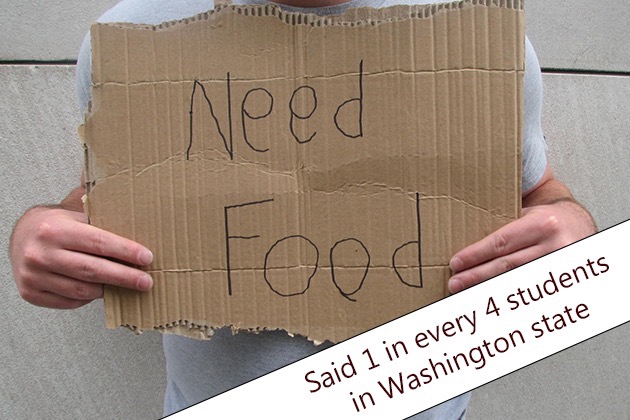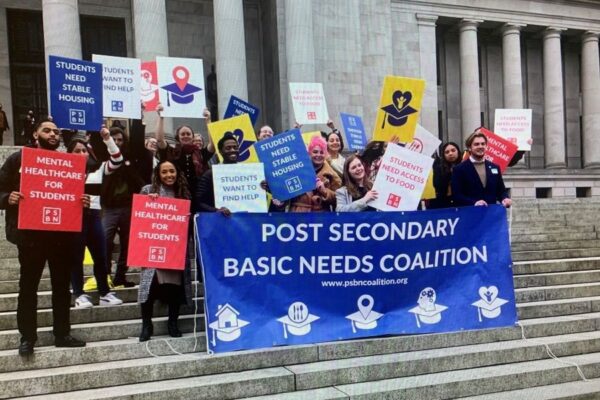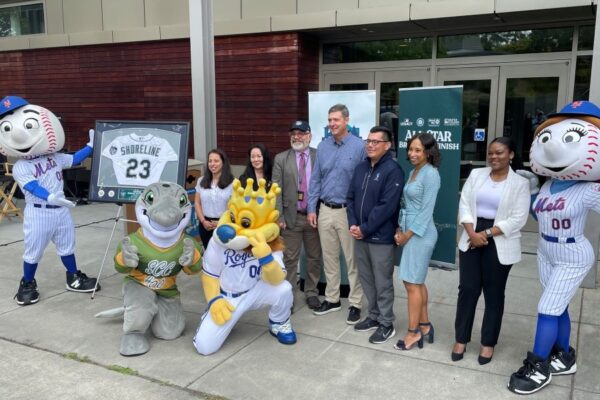Is Hunger in America a Made Up Problem? (Part 1)
This is part one in a two part series. Check out part 2: Six Steps to End Hunger in Washington state.
I spend most dinner conversations with friends discussing big social problems – like homelessness, unemployment, immigration reform, voter suppression, the VA crisis, the achievement gap, and the war on poverty. What can I say? I’m a hot date! As an eternal optimist I believe that solving these issues is possible and, while they might not happen in the next ten years, I expect to see progress during my working years. But the social issue that keeps me up at night and boggles my mind, the issue that keeps me googling for an answer and passionately debating friends and colleagues is hunger.
There is plenty of food in our country. PLENTY OF FOOD. In fact, Americans waste up to 40% of our food each year. And yet hunger exists in every county and congressional district in the United States. 49 million Americans – including one in four Washington kids – are at risk of hunger.
Every day there are seniors, veterans, and working families across the United States who must choose between putting food on the table and keeping the lights on or the roof over head. They must choose between a nutritionally balanced meal and one that fills the belly with empty calories.
Don’t think hunger is a real problem? Watch the documentary A Place At The Table or talk to one of the 73% of teachers who regularly teach kids who come to school hungry. Hunger in America real, it’s growing in many communities, and it has a harmful impact on health, education, and productivity.
Domestic hunger is a big problem but one that is completely solvable – right now. In a world of complex issues – this one should be an easy win. So why aren’t we making more progress?
Ending hunger requires that people who need food have access to food – not exactly rocket science. Consider that on one day is 2012, Amazon customers purchased 26.5 million items – they have the systems and technology to distribute those purchases. We need a similar infrastructure to get food and/or the money to purchase food to hungry people. Too often our response to hunger is food drives and bake sales – while these are important tools to engage communities they are not sustainable or scalable solutions to a major social issue.
United Way of King County invests $1 million annually to support the emergency food system locally. These dollars support nearly 1 million visits to area food banks. These are important investments that are helping thousands of people get by today but it isn’t enough. Food banks today are efficient machines that squeeze every last penny to put food – and often healthy food – on the shelves. We could double or triple those dollars and we still wouldn’t end hunger because you can’t food bank your way out of hunger.
Like water, air, and sleep, food is among our most basic needs. We need the public and political will to declare that food is a basic necessity that everyone should will have access to. Access to food should not be a partisan issue – you need food to learn, grow, work, and thrive. In 2014 we made health coverage available to all Americans. Getting food to Americans in need should certainly be easier than that.
So how is it possible that in 2014 we haven’t figured out how to feed our entire citizenship? More importantly, what do we do about it?
Read “Six Steps to End Hunger in Washington state” to find out.




Comments